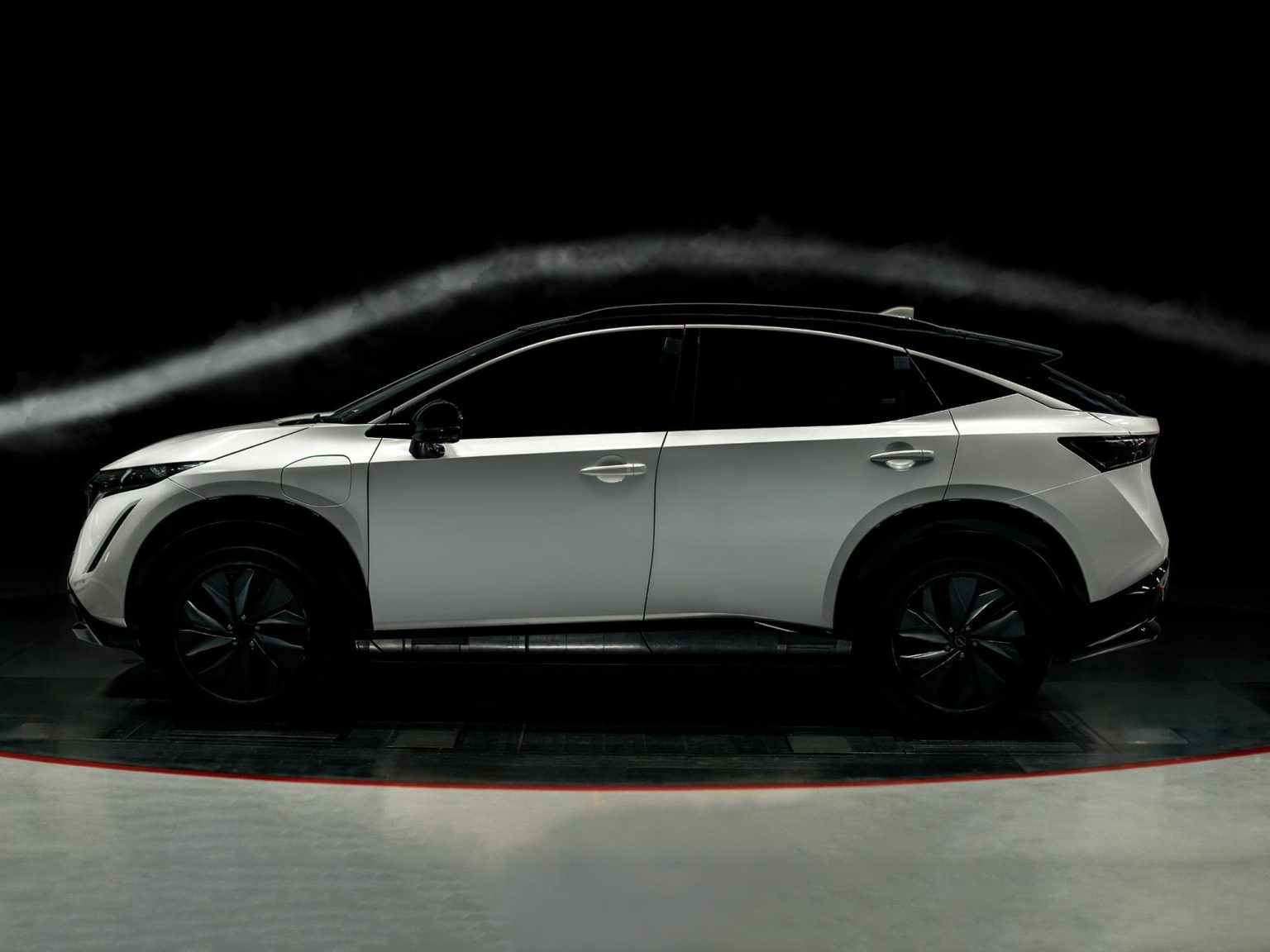Nissan is targeting a drag coefficient (Cd) of 0.297 for the Ariya all-electric crossover. If it can make that number, it will be the company’s most aerodynamic crossover to date. What does that mean? Let’s take a closer look.
What is drag?
Simply put, drag is an aerodynamic force. It’s mechanical in nature, so it is the result of the interaction of a solid body and a liquid. In the case of a car, this liquid is air. (Yes, air is a liquid.) It only occurs when one part of the equation (the solid body or the liquid) is in motion. If there is no motion, there is no drag.
Drag only occurs in the opposite direction of the object’s movement. Think of a car cutting through the air as it drives down a north-south road. As the car heads north, the air it passes through is pushed south. The car is in motion; there is drag.
2022 Nissan Ariya

Photo courtesy of Nisan Motor Company
What is coefficient of drag?
The coefficient of drag, also called a drag coefficient, is a number that aerodynamics professions (aerodynamicists) use to determine the shape, inclination, and flow conditions on a vehicle’s drag. The shape of an object (bullet vs. square vs prism, etc.) has a large impact on the amount of drag created by airflow surrounding a vehicle. Objects with narrower front ends tend to have a lower coefficient.
Scientists and vehicle designers want to keep air moving around the car for maximum efficiency. The inclination of the airflow to either move in a smooth, connected pattern, or to be broken up with air sitting, stalling in one particular part of the vehicle, lessening airflow and making the vehicle less aerodynamic.
A vehicle’s Cd is determined by plugging various measurements into an equation. Cd is equal to drag (D) divided by the quantity of density (r) multiplied by half the velocity (V) squared multiple by the reference area (A). As an equation, it looks like this: Cd = D / (A * .5 * r * V^2).
The smaller the Cd, the more aerodynamic a vehicle is.

The Nissan Ariya employs aerodynamic wheel design, made to help it cut though the air with greater ease.
Photo courtesy of Nissan North America
What is the coefficient of drag of the Nissan Ariya?
“With the growing shift towards electric mobility, aerodynamic testing is becoming increasingly important. The aerodynamics of electric vehicles are directly linked to how efficiently the vehicle moves – less drag and better stability allows the customer to drive longer distances before having to recharge,” said Sarwar Ahmed, Aerodynamics and Aeroacoustics Engineer at Nissan Technical Centre Europe.
Nissan is targeting a 0.297 coefficient of drag for the Ariya. How will it achieve that number? By utilizing precisely shaped body lines and strategically placed air ducts, among other components. There’s a bonus to better aerodynamics when it comes to EVs.
“Following official homologation of the Nissan Ariya later this year, we anticipate the range to improve compared to the 310 mile figure shared in 2020 during the World Premiere. This will give drivers more efficiency and confidence to go even further on a single charge,” said Marco Fioravanti, VP Product Planning, Nissan Europe.
How does the Ariya’s coefficient of drag compare to other Nissans?
The newest Nissans, the Kicks, Pathfinder, and Frontier, don’t have their Cd publicly available yet, but other models have their results. The targeted 0.297 Cd in the Ariya is less than that in the 2021 Armada, Murano, and Rogue. But, it’s higher than the Nissan Leaf.
- 2021 Nissan 370Z – 0.30 or 0.29, depending on trim level
- 2021 Nissan Altima – 0.26
- 2021 Nissan Armada – 0.37
- 2021 Nissan Leaf – 0.28
- 2021 Nissan Maxima – 0.29 or 0.30, depending on trim level
- 2021 Nissan Murano – 0.31
- 2021 Nissan Rogue – 0.33 or 0.34, depending on trim level
- 2021 Nissan Sentra – 0.27 or 0.29, depending on trim level
- 2021 Nissan Versa – 0.29 or 0.32, depending on trim level
- 2021 Nissan Z – 0.26
The fact that it’s higher than the Leaf is not surprising. Shorter cars tend to be more aerodynamic because they sit lower to the ground and have a smaller profile. That also explains why Nissan’s largest and boxiest SUV, the Armada, has the highest number on the list.
How does the Ariya’s coefficient of drag compare to numbers from other EVs?
The Nissan Ariya’s coefficient of drag is higher than that of most other electric cars, crossovers, and SUVs sold in the U.S. Here’s where the others measure up:
- Audi E-Tron – 0.28
- Audi E-Tron Sportback – 0.26
- Chevrolet Bolt EV – .0308
- Chevrolet Bolt EUV – TBD
- Hyundai Kona Electric – 0.29
- Mercedes-Benz EQC – 0.30
- Mini Cooper SE – 0.30
- Jaguar I-Pace – 0.29
- Porsche Taycan – 0.22
- Tesla Model 3 – 0.23
- Tesla Model S – 0.208
- Tesla Model Y – 0.23
- Tesla Model X – 0.25
- Volkswagen ID.4 – 0.28
- Volvo XC40 Recharge – 0.34








